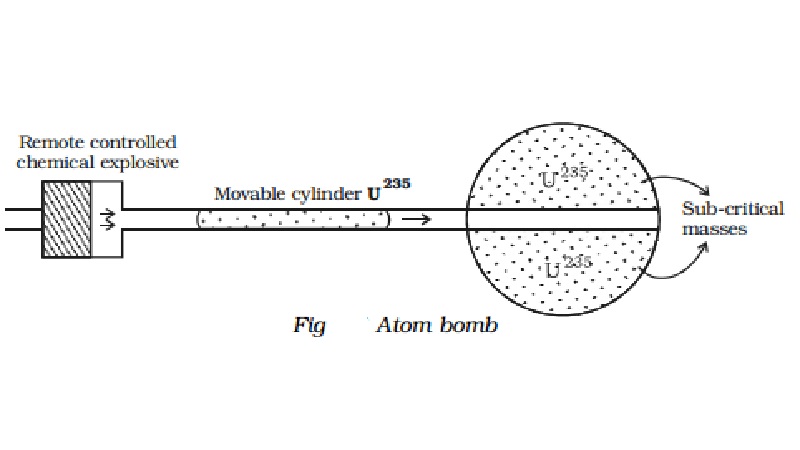Chapter: 11th 12th std standard Class Physics sciense Higher secondary school College Notes
Atom bomb - Principle and construction

Atom bomb
Atom bomb is based on the principle of
uncontrolled fission chain reaction. Natural uranium consists of 99.28% of U238
and 0.72% of U235. U238 is fissionable only by fast
neutrons. Hence, it is essential in a bomb that either U235 or Pu239
should be used, because they are fissionable by neutrons of all energies.
An atom bomb consists of two hemispheres of U235
(or 94Pu239), each smaller than the critical size and are
kept apart by a separator aperture (Fig).

When the bomb has to be exploded, a third well
fitting cylinder of U235 (or 94Pu239) whose
mass is also less than the critical mass, is propelled so that it fuses
together with the other two pieces. Now the total quantity is greater than the
critical mass and an uncontrolled chain reaction takes place resulting in a
terrific explosion.
The explosion of an atom bomb releases
tremendous amount of energy in the form of heat, light and radiation.
Temperature of millions of degree celsius and pressure of millions of
atmosphere are produced. Such explosions produce shock waves. The release of
dangerously radioactive γ−rays, neutrons and radioactive materials
produce a health hazards over the surroundings for a long time. These bombs
were used in world war II and were exploded over Hiroshima and Nagasaki in
Japan. We are quite familiar with the amount of destruction and hazard.
Related Topics